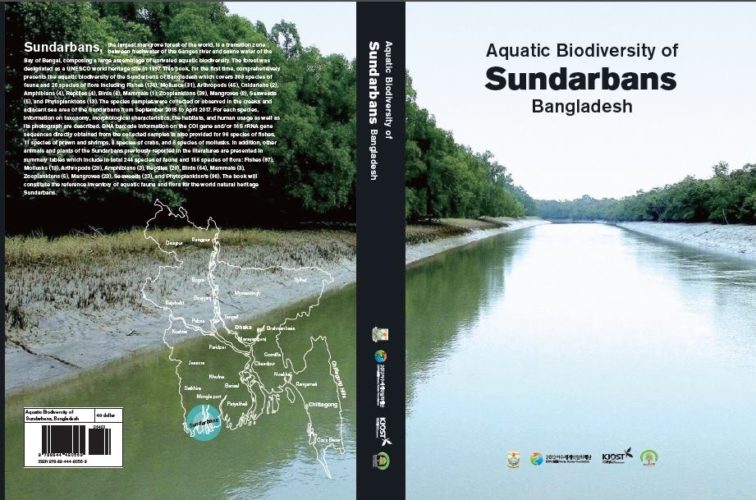
Aquatic Biodiversity of Sundarbans, Bangladesh
Sundarbans, the largest mangrove forest of the world, is a transition zone between freshwater of the Ganges river and saline water of the Bay of Bengal, composing a large assemblage of unrivaled aquatic biodiversity. The forest was designated as a UNESCO world heritage site in 1997. This book, for the first time, comprehensively presents the aquatic biodiversity of the Sundarbans of Bangladesh which covers 309 species of fauna and 26 species of ‑ora including Fishes (174), Molluscs (31), Arthropods (45), Cnidarians (2), Amphibians (4), Reptiles (4), Birds (8), Mammals (1), Zooplanktons (39), Mangroves (8), Seaweeds (5), and Phytoplanktons (13). The species samples were collected or observed in the creeks and adjacent sea area of the Sundarbans from September 2015 to April 2017. For each species, information on taxonomy, morphological characteristics, the habitats, and human usage as well as its photograph are described. DNA barcode information on the COI gene and/or 16S rRNA gene sequences directly obtained from the collected samples is also provided for 105 species of shes, 11 species of prawn and shrimps, 8 species of crabs, and 6 species of mollusks. In addition, other animals and plants of the Sundarbans previously reported in the literatures are presented in summary tables which include in total 244 species of fauna and 156 species of ‑ora: Fishes (97), Mollusks (19), Arthropods (20), Amphibians (3), Reptiles (20), Birds (64), Mammals (3), Zooplanktons (5), Mangroves (23), Seaweeds (23), and Phytoplankton’s (98). The book will constitute the reference inventory of aquatic fauna and ‑ora for the world natural heritage Sundarbans.
Find the second edition of this Book: Aquatic Biodiversity of Sundarbans, Bangladesh
Copyright © All rights reserved - abrlab.org- 2019